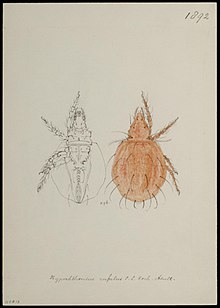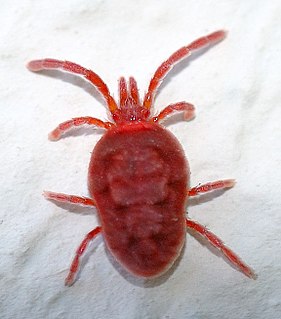
Mites are small arachnids.

Trombicula, known as chiggers, red bugs, scrub-itch mites, or berry bugs, are small arachnids in the Trombiculidae family. In their larval stage, they attach to various animals, including humans, and feed on skin, often causing itching. These relatives of ticks are nearly microscopic, measuring 0.4 mm (0.01 in) and have a chrome-orange hue. A common species of harvest mite in North America is Trombicula alfreddugesi; in the UK, the most prevalent harvest mite is Trombicula autumnalis.
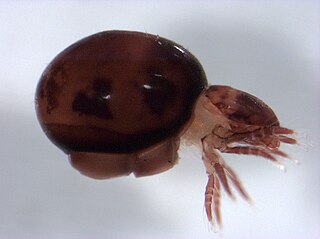
Oribatida, also known as oribatid mites, moss mites or beetle mites, are an order of mites, in the "chewing Acariformes" clade Sarcoptiformes. They range in size from 0.2 to 1.4 millimetres. There are currently 12,000 species that have been identified, but researchers estimate that there may anywhere from 60,000 to 120,000 total species. Oribatid mites are by far the most prevalent of all arthropods in forest soils, and are essential for breaking down organic detritus and distributing fungi.

Brachypylina is a suborder of oribatid mites.

The Sarcoptiformes are an order of Acari comprising over 15,000 described species in around 230 families. Previously it was divided into two suborders, Oribatida and Astigmatina, but Oribatida has been promoted to an order, and Astigmatina is now an unranked taxon.
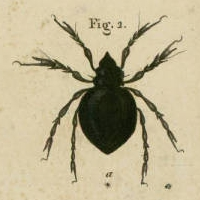
Damaeidae Berlese (1896) is a family of mites. Alternative names for the family include Belbidae Willmann (1931), and Belbodamaeidae Bulanova-Zachvatkina (1967) or Hungarobelbidae (1996). They had been previously considered to be distinct families.
Plateremaeidae is a family of oribatids in the order Sarcoptiformes. There are about 7 genera and 19 described species in Plateremaeidae.
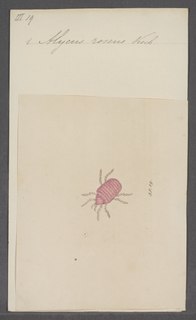
Alycidae is a family of mites, or endeostigs, in the suborder Endeostigmata. There are at least 6 genera in Alycidae.
Ameronothridae is a family of oribatids in the order Oribatida. There are about 8 genera and at least 30 described species in Ameronothridae.
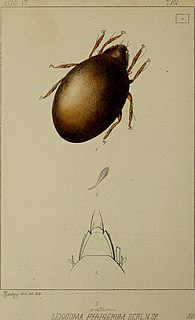
Liacaridae is a family of mites in the order Oribatida. There are about 7 genera and more than 240 described species in Liacaridae.
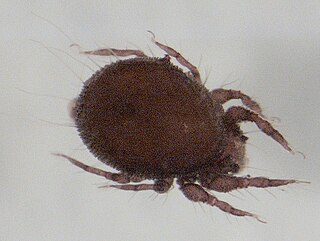
Hermanniellidae is a family of oribatids in the order Oribatida. There are about 9 genera and at least 50 described species in Hermanniellidae.
Neoliodidae is a family of oribatids in the order Oribatida. There are at least 4 genera and 50 described species in Neoliodidae.

Phthiracaridae is a family of oribatid mites in the order Oribatida. There are about 7 genera and at least 710 described species in Phthiracaridae.
Galumnidae is a family of mites and ticks in the order Sarcoptiformes. There are at least 30 genera and 410 described species in Galumnidae.
Achipteriidae is a family of mites and ticks in the order Sarcoptiformes. There are about 9 genera and at least 80 described species in Achipteriidae.
Mochlozetidae is a family of mites and ticks in the order Sarcoptiformes. There are about 12 genera and at least 50 described species in Mochlozetidae.
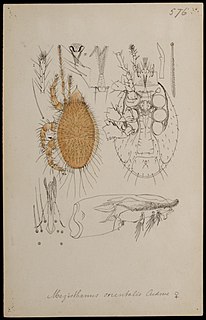
Antennophorina is a suborder of mites in the order Mesostigmata. There are at least 4 families and more than 20 described species in Antennophorina.

Trombidioidea is a superfamily of mites in the order Trombidiformes. There are about 8 families and at least 430 described species in Trombidioidea.
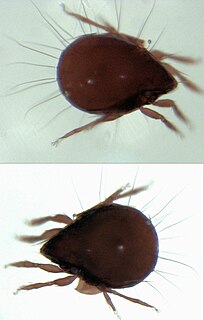
Oripodoidea is a superfamily of oribatids in the order Oribatida. There are about 19 families and at least 1,300 described species in Oripodoidea.
Licneremaeoidea is a superfamily of mites in the order Oribatida. There are about 6 families and more than 170 described species in Licneremaeoidea.
